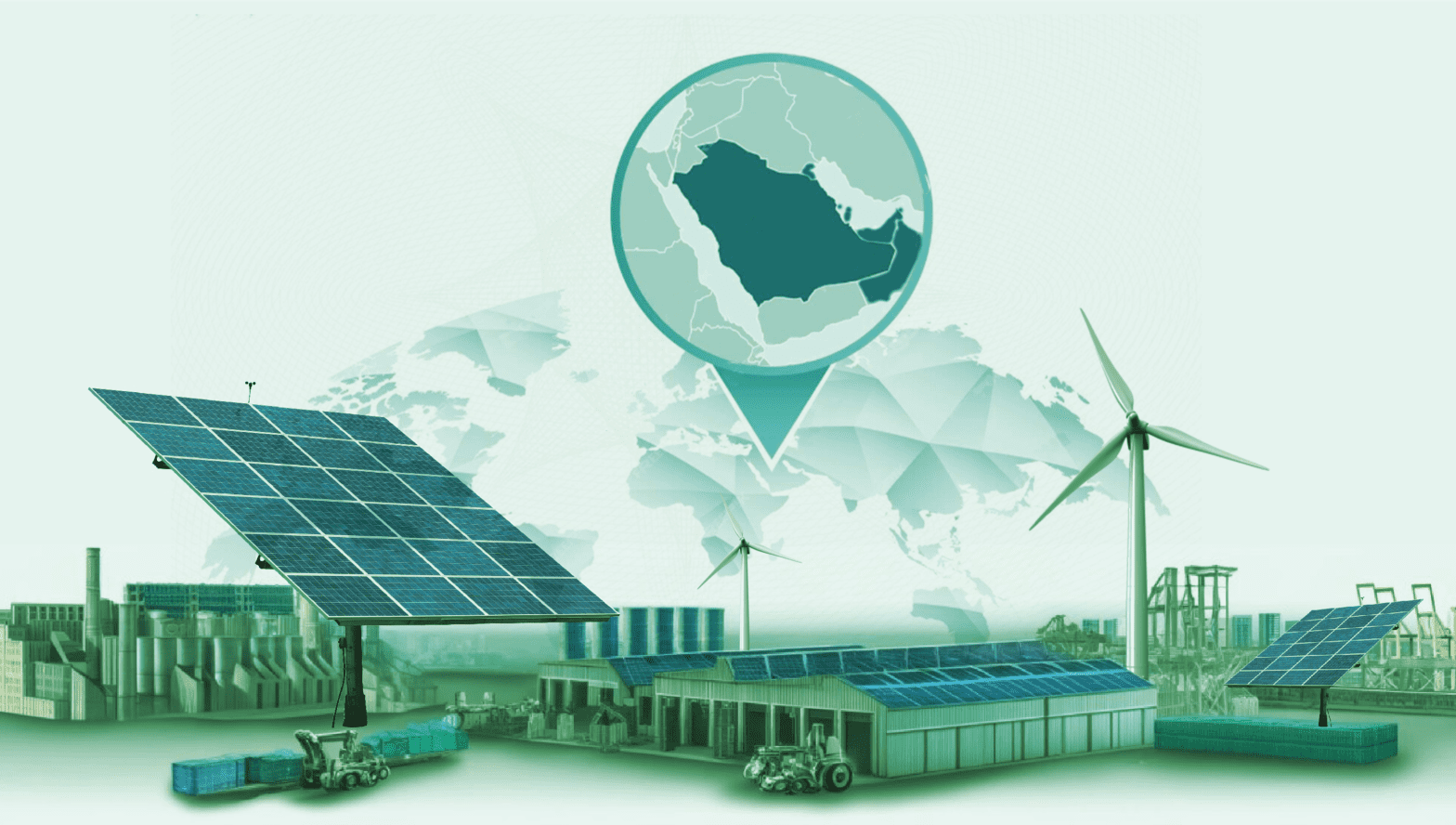
Climate change and sustainable development new evidence from the Gulf cooperation Council economies
Authors: Alanoud Al-Maadid, Mohamed Sami Ben Ali, Ijaz Younis
College of Business & Economics, Qatar University, Doha, Qatar
Received 18 May 2025, Revised 14 August 2025, Accepted 2 September 2025, Available online 9 September 2025, Version of Record 13 September 2025.
Highlights
• This study investigates the impacts of climate change on sustainable development in the GCC.• We show linkages of climate change with sustainable development in the short and long terms.
• The Granger causality show bidirectional causal effects with sustainable development.
Abstract
1. Introduction
2. Literature review and theoretical framework
2.1. Theoretical studies and empirical research
2.2. Literature gaps
2.3. Theoretical framework
3. Data, models and methodology
3.1. Data and descriptive statistics
 Fig. 1
Fig. 1 Fig. 2
Fig. 23.2. Models and tests
Table 1. CSD and SCH tests.
| Test | Delta | p value |
|---|---|---|
| Pesaran's test of CSD | 5.152∗∗∗ | 0.000 |
| Slope homogeneity | 5.670∗∗∗ | 0.000 |
| Slope homogeneity (adjusted) | 7.645∗∗∗ | 0.000 |
Source: Authors' estimate, (2024) Note: ∗∗∗, ∗∗ and ∗ indicate significance at the 1 %, 5 % and 10 % levels, respectively.
Table 2. Unit root test.
| LL & Chu | Im, P&S | ADF - Fisher | PP - Fisher | CADF | CIPS | |
|---|---|---|---|---|---|---|
| SDI | −3.347∗∗∗ | −2.626∗∗∗ | 26.446∗∗∗ | 58.184∗∗∗ | 14.589∗∗∗ | 12.109∗∗∗ |
| p value | 0.000 | 0.004 | 0.009 | 0.000 | 0.000 | 0.000 |
| TEMP | −6.266∗∗∗ | −6.461∗∗∗ | 60.517∗∗∗ | 484.321∗∗∗ | 3.584∗∗∗ | 3.610∗∗∗ |
| p value | 0.000 | 0.000 | 0.000 | 0.000 | 0.011 | 0.005 |
| TIP | 6.098 | −0.815 | 22.027∗∗ | 64.144∗∗∗ | −3.495∗∗ | 0.833∗∗∗ |
| p value | 1.000 | 0.208 | 0.037 | 0.000 | 0.045 | 0.000 |
| TPP | −0.946 | −1.612∗∗ | 18.713∗ | 6.695 | 1.096∗∗ | 5.691∗∗∗ |
| p value | 0.172 | 0.054 | 0.096 | 0.877 | 0.062 | 0.000 |
| TRD | −4.777∗∗∗ | −4.447∗∗∗ | 42.124∗∗∗ | 62.407∗∗∗ | 21.536∗∗ | 14.695∗∗∗ |
| p value | 0.000 | 0.000 | 0.000 | 0.000 | 0.004 | 0.003 |
| FDI | −2.061∗∗ | −3.772∗∗∗ | 35.845∗∗∗ | 86.859∗∗∗ | 2.120∗∗∗ | 0.946∗∗∗ |
| p value | 0.020 | 0.000 | 0.000 | 0.000 | 0.000 | 0.000 |
| GDP | −2.618∗∗ | −3.085∗∗∗ | 29.528∗∗∗ | 36.845∗∗∗ | 3.299∗∗∗ | 1.662∗∗ |
| p value | 0.004 | 0.001 | 0.003 | 0.000 | 0.003 | 0.056 |
| NRS | −6.195∗∗∗ | −4.452∗∗∗ | 41.602∗∗∗ | 47.201∗∗∗ | 4.698∗∗∗ | 7.142∗∗∗ |
| p value | 0.000 | 0.000 | 0.000 | 0.000 | 0.012 | 0.000 |
Source: Authors' estimate, (2024) Note: ∗∗∗, ∗∗ and ∗ significant at the 1 %, 5 % and 10 % levels, respectively.
Table 3. Panel cointegration test.
| Indicators | Gt | Ga | Pt | Pa |
|---|---|---|---|---|
| TEMP | −1.644∗∗ | −9.645∗∗∗ | −2.131∗∗∗ | −5.894∗∗∗ |
| NRS | −1.840∗∗ | −11.782∗∗∗ | −2.538∗∗∗ | −10.334∗∗∗ |
| TIP | −2.133∗∗ | −9.526∗∗∗ | −3.640∗∗∗ | −12.540∗∗∗ |
| FDI | −1.422∗ | −7.435∗∗∗ | −2.696∗∗∗ | −7.687∗∗∗ |
| GDP | −1.610∗∗ | −9.234∗∗∗ | −2.977∗∗∗ | −10.689∗∗∗ |
| TPP | −1.934∗∗ | −6.239∗∗∗ | −4.471∗∗∗ | −7.609∗∗∗ |
| TRD | −1.320∗ | −10.454∗∗∗ | −2.326∗∗∗ | −9.864∗∗∗ |
Source: Authors' estimate, (2024) Note: ∗∗∗, ∗∗ and ∗ significant at the 1 %, 5 % and 10 % levels, respectively.
4. Empirical results and discussion
4.1. Empirical results QARDL
Table 4. Results of Quantile Autoregressive Distributed Lag (QARDL) model for SDI.
| Short-Run Estimations | ||||||||
|---|---|---|---|---|---|---|---|---|
| Quantile | Constant | TEMP | NRS | TIP | FDI | GDP | TPP | TRD |
| 0.1 | −0.3746∗∗∗ | −0.2265∗∗∗ | −0.1463∗∗∗ | 0.733∗∗∗ | −0.2938∗∗∗ | 0.3741∗∗∗ | −0.9318∗∗∗ | 0.0161∗∗ |
| 0.2 | −0.1925∗∗ | −0.1557∗∗∗ | −0.215∗∗∗ | 0.631∗∗∗ | −0.206∗∗∗ | 0.5632∗∗∗ | −1.0417∗∗ | −0.058∗∗ |
| 0.3 | −0.1132∗∗∗ | −0.1739∗∗∗ | −0.3006∗∗∗ | 0.5236∗∗∗ | −0.1816∗∗ | 0.6951∗∗∗ | −1.1012∗∗ | −0.0728∗∗ |
| 0.4 | −0.0569∗∗ | −0.1955∗∗∗ | −0.3311∗∗∗ | 0.5328∗∗∗ | −0.1488∗∗ | 0.6741∗∗∗ | −1.0746∗∗ | −0.1087∗∗ |
| 0.5 | −0.0089∗ | −0.1612∗∗∗ | −0.3297∗∗∗ | 0.4806∗∗∗ | −0.1291∗ | 0.6893∗∗∗ | −1.0068∗∗ | −0.1109∗∗ |
| 0.6 | 0.0836∗∗ | −0.1247∗∗ | −0.269∗∗∗ | 0.5544∗∗∗ | −0.1464∗∗ | 0.6532∗∗∗ | −1.0178∗∗ | −0.1116∗∗ |
| 0.7 | 0.1648∗∗ | −0.0649∗ | −0.2438∗∗ | 0.5558∗∗∗ | −0.1575∗∗ | 0.5904∗∗∗ | −0.9493∗∗ | −0.1179∗∗∗ |
| 0.8 | 0.2215∗∗∗ | −0.084∗ | −0.2481∗∗∗ | 0.5511∗∗∗ | −0.1269∗∗ | 0.6397∗∗∗ | −1.0003∗∗ | −0.098∗ |
| 0.9 | 0.3865∗∗∗ | 0.0753∗∗ | −0.1772∗∗ | 0.5923∗∗∗ | −0.1213∗ | 0.5157∗∗∗ | −0.8596∗∗ | −0.0992∗ |
| Long-Run Estimations | ||||||||
| 0.1 | 124.1∗∗∗ | −2.339∗∗∗ | −0.083∗∗ | 0.002∗∗∗ | −0.33∗∗∗ | 0.003∗∗∗ | 0.023∗∗∗ | 0.012 |
| 0.2 | 85.48∗∗∗ | −1.003∗ | −0.008 | 0.002∗∗∗ | −0.353∗∗∗ | 0.002∗ | 0.054∗∗∗ | 0.016 |
| 0.3 | 79.96∗∗∗ | −0.761 | −0.011 | 0.002∗∗∗ | −0.328∗∗∗ | 0.002 | 0.026∗∗∗ | 0.012 |
| 0.4 | 75.76∗∗∗ | −0.529 | −0.029 | 0.002∗∗∗ | −0.303∗∗∗ | 0.006∗∗ | 0.068∗∗∗ | 0.001 |
| 0.5 | 68.76∗∗∗ | −0.264 | −0.023 | 0.002∗∗∗ | −0.33∗∗∗ | 0.008∗∗ | 0.092∗∗∗ | −0.001 |
| 0.6 | 65.23∗∗∗ | −0.147 | −0.008 | 0.002∗∗∗ | −0.291∗∗∗ | 0.004∗∗ | 0.042∗∗∗ | 0.002 |
| 0.7 | 69.63∗∗∗ | −0.277 | −0.016 | 0.002∗ | −0.293∗ | 0.0001 | 0.032∗ | −0.002 |
| 0.8 | 65.23∗ | −0.049 | −0.027 | 0.002 | −00.242 | 0.0008 | 0.002 | −0.01 |
| 0.9 | 64.233∗ | 0.373 | −0.088 | 0.004∗∗ | 0.155 | 0.0005 | 0.035∗∗ | −0.08∗∗∗ |
Source: Authors' estimates (2024). ∗∗∗, ∗∗ and ∗ indicate significance at the 1 %, 5 % and 10 % levels, respectively.
4.2. Empirical results of Quantile on Quantile (QoQ)
 Fig. 3
Fig. 34.3. Robustness test: Granger causality
Table 5. Tests for Granger causality.
| Null hypothesis | F | p value | Inference |
|---|---|---|---|
| TEMP⇎ SDI | 2.2772∗∗ | 0.0228 | TEMP → SDI |
| SDI ⇎ TEMP | 1.5885 | 0.1122 | SDI # TEMP |
| NRS ⇎ SDI | 2.4413∗∗ | 0.0590 | NRS → SDI |
| SDI ⇎ NRS | 1.1518 | 0.8794 | SDI # NRS |
| TIP ⇎ SDI | 4.3720∗∗∗ | 0.0000 | TIP ↔SDI |
| SDI ⇎ TIP | 3.2280∗∗∗ | 0.0012 | SDI ↔ TIP |
| FDI ⇎ SDI | 1.9436∗∗ | 0.0454 | FDI→ SDI |
| SDI ⇎ FDI | 0.3454 | 0.5859 | SDI # FDI |
| GDP ⇎ SDI | 6.5331∗∗∗ | 0.0000 | GDP ↔ SDI |
| SDI ⇎ GDP | 4.5448∗∗∗ | 0.0000 | SDI ↔ GDP |
| TPP ⇎ SDI | 9.5836∗∗∗ | 0.0000 | TPP ↔SDI |
| SDI⇎ TPP | 7.3067∗∗∗ | 0.0000 | SDI↔ TPP |
| TRD ⇎ SDI | 2.4825∗∗∗ | 0.0130 | TRD↔ SDI |
| SDI⇎ TRD | 1.7492∗ | 0.0803 | SDI↔TRD |
4.4. Discussion on results
5. Conclusions and policy implications
5.1. Concluding remarks
5.2. Policy implications and study limitations
CRediT authorship contribution statement
Declaration of competing interest
Acknowledgements
Appendices.
Table A.1. Description of variables.
| Variables | Description | Unit of Measurement | Source |
|---|---|---|---|
| SDI | Sustainable development index | Index | Jeffrey D Sachs et al., 2023a, Sachs et al., 2023b |
| TEMP | temperature as a proxy for Climate change | Annual mean temperature in centigrade | www.climateknowledgeportal.worldbank.org |
| TNR | Total natural resource rent | % of GDP | www.wdi.com |
| TIP | Technological innovation (patents) | Number | www.wdi.com, OECD and WIPO |
| GDP | Gross domestic product | Constant 2010 US$ | www.wdi.com |
| FDI | Foreign direct investment | Net inflow of imports and exports | www.wdi.com |
| TRD | Trade | Percent of GDP | www.wdi.com |
| TPP | Population | Total population | www.wdi.com |
Table A.2. Descriptive statistics and correlation matrix.
| Static indicators | SDI | TEMP | TIP | TPP | TRD | FDI | GDP | NRS |
|---|---|---|---|---|---|---|---|---|
| Mean | 60.90091 | 27.55158 | 633.725 | 7630434 | 108.3827 | 2.237047 | 1.92E+11 | 31.49198 |
| Median | 60.823 | 27.8 | 273 | 3043591 | 98.0115 | 1.522891 | 1.15E+11 | 29.53191 |
| Maximum | 69.63078 | 29.02 | 3651 | 35997107 | 191.8726 | 15.75087 | 8.47E+11 | 59.0697 |
| Minimum | 55.10265 | 25.8 | 21 | 678831 | 49.71347 | −2.76002 | 8.98E+09 | 9.648615 |
| Std. Dev. | 2.88723 | 0.94903 | 777.0499 | 10121396 | 31.00853 | 2.727322 | 2.08E+11 | 12.40309 |
| Skewness | 0.640573 | −0.495749 | 2.15658 | 1.743839 | 0.811177 | 1.675834 | 1.600087 | 0.25625 |
| Kurtosis | 3.646893 | 1.913615 | 7.763739 | 4.506072 | 2.845818 | 7.577728 | 4.760974 | 2.0992 |
| Jarque–Bera | 10.29903 | 10.81651 | 206.4828 | 72.16074 | 13.27903 | 160.9463 | 66.71071 | 5.37049 |
| Probability | 0.005802 | 0.004479 | 0.000 | 0.000 | 0.001308 | 0.000 | 0.000 | 0.068204 |
| Sum | 7308.109 | 3306.19 | 76047 | 9.16E+08 | 13005.92 | 268.4457 | 2.31E+13 | 3779.037 |
| Sum Sq. Dev. | 991.9957 | 107.1782 | 71852984 | 1.22E+16 | 114421.9 | 885.1557 | 5.16E+24 | 18306.57 |
| Observations | 120 | 120 | 120 | 120 | 120 | 120 | 120 | 120 |




